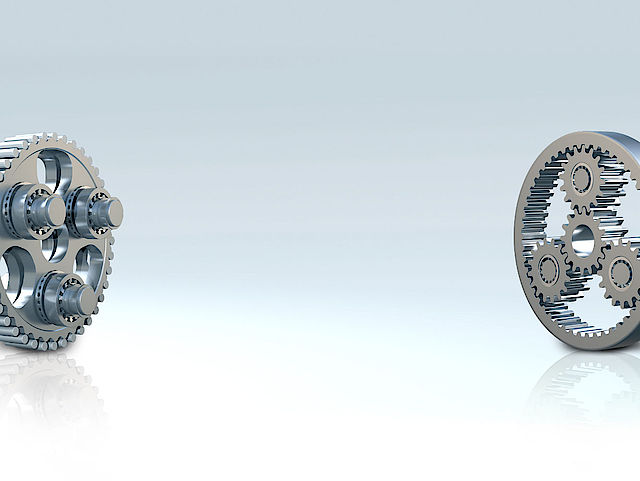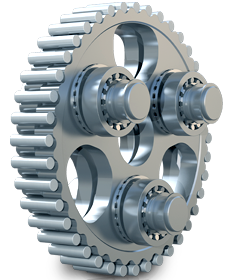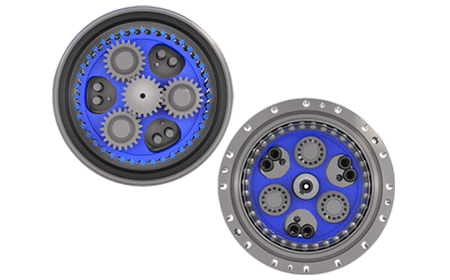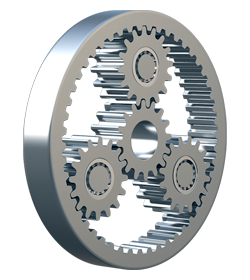



Applications with especially high precision – whether in plant engineering, robotics, machine tool construction or medical technology – require robust precision gears designed for a long life. Two types of gears are available for such applications: planetary and cycloidal gears. Although the areas of use for these two gear types overlap, cycloidal gears can replace planetary gears in many applications.





If features like backlash and positioning accuracy are important, cycloidal gears deliver better performance in every respect. They have a more robust design than planetary gears, which means they also last longer. In addition, the increase of backlash in cycloidal gears is very low over extended periods – a significant advantage over normal planetary gears, which often develop increased backlash during the course of their service life.
Cycloidal gears enable reduction ratios from 30:1 to more than 300:1 – without additional pre-stages such as those that are necessary in standard planetary gears. Due to their design, cycloidal gears are much more rigid and more compact (about 50% shorter), and also lighter than multi-stage planetary gears. In addition, they offer 500% higher overload protection.

Cycloidal gears owe these properties to their special design principle. As a result of the cycloidal design the gear needs no gear teeth in the output stage and is not subjected to shear forces. That makes them exceptionally efficient, precise and robust.
The power transmission via rollers and cams typical of cycloidal gears ensures high efficiency, a long life and extremely low backlash in the gear. Virtually complete contact within the cycloidal pin construction and the even force distribution enable a high load-bearing capacity. The two-stage reduction principle minimises vibrations and mass inertia, while allowing higher reduction ratios.

If there are no such stringent requirements for backlash or if reduction ratios of i < 30 are required, planetary gears, also known as epicyclic gears, are the better choice. They consist essentially of three basic elements: a central gear or sun gear, three or more satellite or planetary gears, and a ring gear. In a typical planetary gear set the central gear transmits the movement to the satellites, which then mesh in rolling contact within the static ring gear. The planetary gears are mounted on the planetary carrier, which transmits the rotations to the output shaft.
As opposed to simple gear reduction solutions, such as worm gears, the forces on the gear teeth in planetary gears are lower, since the torque is always distributed over several gear teeth. In addition, this distribution ensures quiet operation with no interruption in the power flow.